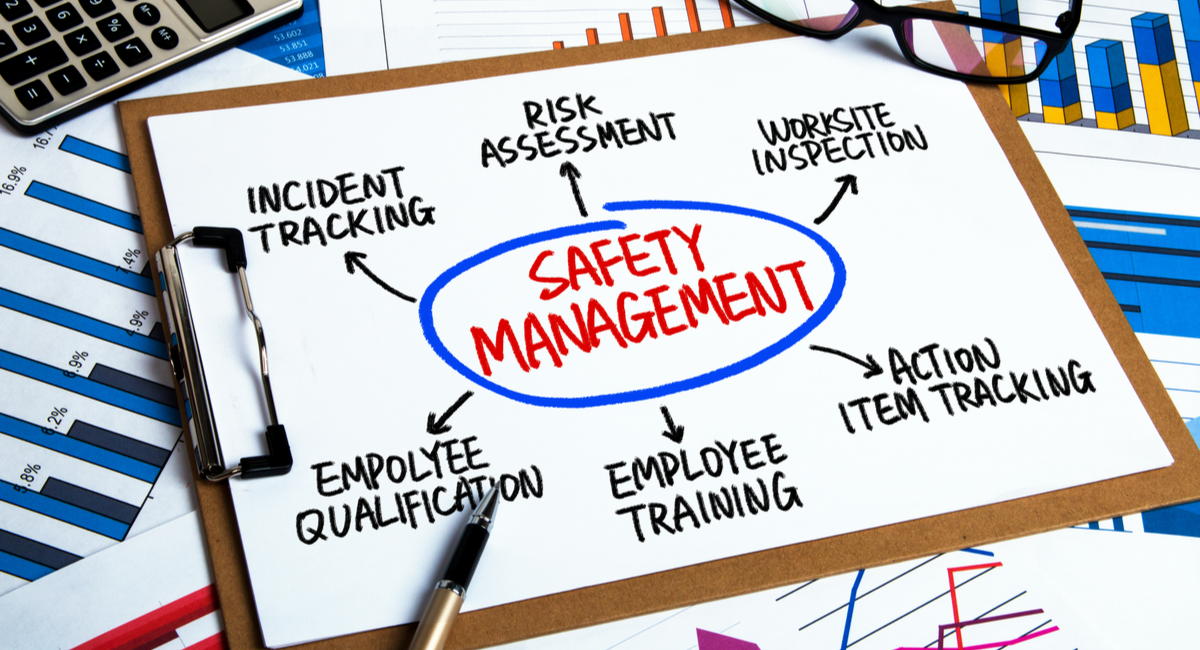
How to Optimize a Safety Management System to Keep the Workplace Safe
A safety management system identifies potential hazards, assesses remedial measures, and controls outbreaks. But not all software products are equal. Here are ten factors to consider while choosing a safety management software.
1. Hazard Identification Capabilities
A safety management software ensures the workplace remains free from the risks and hazards of all hues. Various regulatory agencies such as US OSHA lays down safety standards, rules, and regulations for such ends.
A good safety inspection software:
- Offers standards-compliant checklists to keep the workplace safe.
- Self-inspection checklists for construction, general industry, and other checklists.
- Enables the workforce to undertake Task-Hazard Analysis, such as listing job steps, tools, and materials used in different processes and identifying the worst-case scenario in an accident’s eventuality.
- Allows integrating technical data checklists such as safety data sheets for chemicals.
- Match potential hazards with the applicable OSHA, EPA, and other standards.
- Create a hazard communication program for dangerous chemicals. Conjure up similar plans for different types of risks.
Read more: Top 10 Digital Inspection Forms From ReachOut to Supercharge Your Business
2. Gap Analysis and Risk Assessment Capabilities
Regulatory standards such as ANSI Z10 recommend an assessment of incumbent safety programs and identify areas of improvement. Such gap analysis measures the extent to which incumbent systems safeguard against the hazards.
Safety inspection software facilitates gap analysis. The software offers a checklist for line employees and supervisors to:
- Perform a risk assessment of operations
- Pin-point the probability of something going amiss
- Estimate the severity of any event, and prioritize risk
3. Ensure Fidelity to Standards and Frameworks
There are different safety management frameworks in vogue today, including the popular ANSI Z-10 and ISO 45001.
Sound safety management systems remain in sync with the recognized frameworks. But there is no magic bullet to identify the best standard. The best standard depends on the nature of the business and also the regulatory stipulations in place.
4. Sync with Your Business Needs
Safety standards and frameworks notwithstanding, each enterprise is unique. An effective safety plan caters to the specific needs of the enterprise.
Consider a drywall company mandated to have a respiratory program for employees exposed to silica. Welders operating in such environments face exposure to toxic metal particles and fumes. They require tight-fitting air-purifying respirators. But employees performing drywall operations have a lesser exposure to risk and need only N95 disposable masks. Likewise, welders need a more complex medical fitness exam compared to drywall finishers.
A good safety management software is flexible to cater to specific enterprise needs.
Read more: How Fire & Safety Industry Can Improve Efficiency With Field Service Management Software
5. Align with Basic Management Practices
Safety management practices ultimately depend on the basic principles of business management. A successful safety management program encompasses best practices related to planning, controlling, and directing enterprise resources to achieve the policy objectives.
Make sure the safety management software stipulates:
- Details of the management hierarchy, including a list of personnel responsible for handling contingencies
- A disciplinary system to enforce policies and penalize violators
6. Ensure Collaboration
The best safety systems support collaboration effectively. A rigid, bureaucratized, and compliance-based safety management structure may not recognize the latest threats in today’s fast-paced business environment.
To ensure seamless collaboration:
- Take feedback from employees and base updates to the safety management software on such feedback.
- Create a learning atmosphere where employees question processes and procedures.
- Encourage transparency and open sharing of information. Safety standards and protocols require wide dissemination.
Read more: 10 Most Important Skills for Compliance Managers
7. Aid Behavioral Change
The behavior-based approach to safety observes unsafe or undesirable workplace behaviors and intervenes to change such behavior.
The approach analyzes past accidents, near-miss incidents, and other safety-related disruptions to chalk out a list of safe behaviors.
The success of the behavior-based approach depends on the quality of the checklist. A good safety inspection software offers an index to track safety behaviors. A dashboard delivers an enterprise-level overview of employee safety behaviors. It also makes explicit analytical insights from such data.
8. Implement Safety Training
OSHA and several other regulations mandate employee safety training. A safety management software complements workforce training in the following ways:
- Help employees keep a log of training lessons received visa-a-vis training required, as determined by an appraisal process.
- Impart training through quizzes, arrange on-the-job demonstrations and more.
- Track training certificates received by individual employees and the competencies of any team.
DOWNLOAD FREE GUIDE: Compliance Risk Assessment for Fire Safety
9. Effective Record Keeping
The efficacy of any safety management system depends on robust recordkeeping.
Record keeping makes explicit:
- Determine the regulations and standards applicable to any business unit.
- List of incidents and potential hazards.
- Mitigation measures
- Record of workforce safety training, and more.
10. Avoid the Fallacy of Heinrich’s Triangle
The Injury Pyramid theory, developed by H. W. Heinrich in 1931, postulates that serious accidents occur after a finite number of minor accidents. History has proved this concept, though widely popular, is fallacious.
A good safety management software is proactive. It covers all potential risks and not just the incidents that have already come to pass.
Safety management software prevents employee injuries, process failures and improves long-term profitability. Accidents and other mishaps attract costly fines and compensation claims and deprive the morale of the workforce.
Read more: How Field Service Providers Can Utilize ReachOut’s Digital Forms to Gain Competitive Advantage
Manage your incidents, audits, inspections, safety, and risks and compliance with ReachOut’s field service app. Contact our expert to learn more.
Aarathy
With over a decade of experience in the technology sector, Aarathy is passionate about improving field service efficiency through digital innovation. She is particularly interested in topics such as field service trends, service automation, and strategies for implementing digital transformation in service management.
More posts by Aarathy


